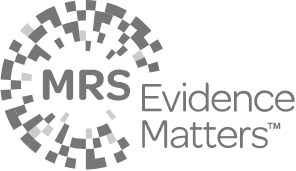


Ethnography can help investigate very complicated or critical design challenges. A good researcher is essential when observing and/or interacting with target audiences in their real-life environment.
What is ethnographic research?
Ethnographic research is a qualitative method where researchers observe and/or interact with a study’s participants in their real-life environment. Ethnography was popularised by anthropology, but is used across a wide range of social sciences.
Within the field of usability, user-centred design and service design, ethnography is used to support a designer’s deeper understanding of the design problem – including the relevant domain, audience(s), processes, goals and context(s) of use.
The aim of an ethnographic study within a usability project is to get ‘under the skin’ of a design problem (and all its associated issues). It is hoped that by achieving this, a designer will be able to truly understand the problem and therefore design a far better solution.
Methods associated with ethnography
Anthropological ethnographers often live amongst a group/society for a year or more, in order to learn about them. This fully immersive, long-term ‘live and work’ approach to ethnography has not proven popular within the field of usability.
Part of the reason may involve cost, but it is also the case that anthropologists and usability practitioners are interested in different things. Anthropologists use ethnography in an attempt to fully understand as much as possible about an entire society. Usability practitioners are usually only interested in learning information that will support their reasoning on a specific design problem.
We would argue that deep, immersive ‘live and work’ ethnography is rarely required within the field of user-centred design. However, short ethnographic studies can be very useful for user-centred projects. For example: in order to understand the way in which a Merchant Bank trades and operates, a usability consultant might conduct an ethnographic study by working and socialising with its employees for a month.
Individual methods which are available within an ethnographic study include: participant observation, interviews and surveys. All of these ethnographic methods can be very valuable in gaining a deeper understanding of a design problem. Usability practitioners often make use of these in order to develop their understanding of the relevant domain, audience(s), processes, goals and context(s) of use.
When to use ethnography
Ethnography is most useful in the early stages of a user-centred design project. This is because ethnography focuses on developing an understanding of the design problem. Therefore, it makes more sense to conduct ethnographic studies at the beginning of a project in order to support future design decisions (which will happen later in the user-centred design process).
Ethnographic methods (such as participant observation) could also be used to evaluate an existing design – but their true value comes from developing an early understanding of the relevant domain, audience(s), processes, goals and context(s) of use.
We would normally recommend that ethnographic methods are used for very complex and/or critical design problems. More complex design problems (in terms of their domain, audience(s), processes, goals and/or context(s) of use) are likely to need the deeper understanding which ethnographic studies can bring. Equally, highly critical systems (where failure or error can lead to disaster) could also justify significant ethnographic research.
For example: An insurance company wanted to re-design their system dealing with the processing of insurance claims. This system had evolved over many years and actually represented a patchwork of previous systems. The ‘claim processing’ supported by this ‘system of systems’ is itself a highly complex process. In this example, ethnographic research should probably be considered.
Advantages of ethnography
One of the main advantages associated with ethnographic research is that ethnography can help identify and analyse unexpected issues. When conducting other types of studies, which are not based on in-situ observation or interaction, it can very easy to miss unexpected issues. This can happen either because questions are not asked, or respondents neglect to mention something. An ethnographic researcher’s in-situ presence helps mitigate this risk because the issues will (hopefully) become directly apparent to the researcher.
Ethnography’s other main benefit is generally considered to be its ability to deliver a detailed and faithful representation of users’ behaviours and attitudes. Because of its subjective nature, an ethnographic study (with a skilled researcher) can be very useful in uncovering and analysing relevant user attitudes and emotions.
Disadvantages of ethnography
One of the main criticisms levelled at ethnographic studies is the amount of time they take to conduct. As discussed above, ethnographic studies do not always require a long period of time, but this consideration is nonetheless valid. Because of its richer output, an ethnographic study will tend to take longer to generate and analyse its data than many other methods.
During previous ethnographic studies, we have found that it is possible that subjects may not act naturally during a short study. Longer studies normally counter-act this because the subjects grow to trust the researcher and/or get tired of any pretence.
For example: During the first week of an ethnographic study into an insurance claim processing system, all the subjects were observed to be following the strictest interpretation of the correct procedures. As time progressed, however, it became increasingly apparent that almost all employees had ‘work-arounds’ and ‘short cuts’ which were liberally used in order to speed things up. These behaviours were very instructive in helping to re-design the process flow. Had the researcher not stayed in-situ long enough to observe these, they may have gone unrecorded.
Risks associated with ethnography
As stated above, ethnographic studies consist of the researcher observing and/or interacting with subjects within the environment which the (future) design is intended to support. The two main potential weaknesses with ethnographic studies are:
Researcher
Ethnographic researchers need to be very highly-skilled to avoid all the potential pitfalls of an ethnographic study. Some of these include the detail & completeness of observations, as well as potential bias (and mistakes) in data collection or analysis.
Subjects
It is essential that any studies’ subjects are as true a representation of the larger user audience as possible (assuming that the study has been designed this way). It is also vital that the subjects are open and honest with the researcher. Of course, both of these issues are related to the quality of the researcher themselves and their role in the study’s design.
As we can see from the above, most of the risks associated with ethnographic studies relate to the researcher, either directly or indirectly. This, of course, means that the choice of ethnographic researcher is critical to a study’s success. We recommend choosing a researcher with a proven background of past involvement in successful projects across varying domains.

We would generally recommend that an ethnographic approach may be suitable for the early stages of a user-centred project that deals with a particularly complicated or critical design challenge. This is because ethnographic methods allow a particularly deep understanding of a design problem’s domain, audience(s), processes, goals and context(s) of use. These ethnographic methods can also be very useful in discovering and exploring previously unknown issues.
Perhaps the most critical decision within an ethnographic study is the choice of ethnographic researcher. This individual will design, conduct and analyse the study’s findings – so it is essential that they have the skill and experience to make sure the study is representative, accurate and fair.





Ben is on hand to answer your questions.


.jpg)

.jpg)
.png)



.svg)




.png)

